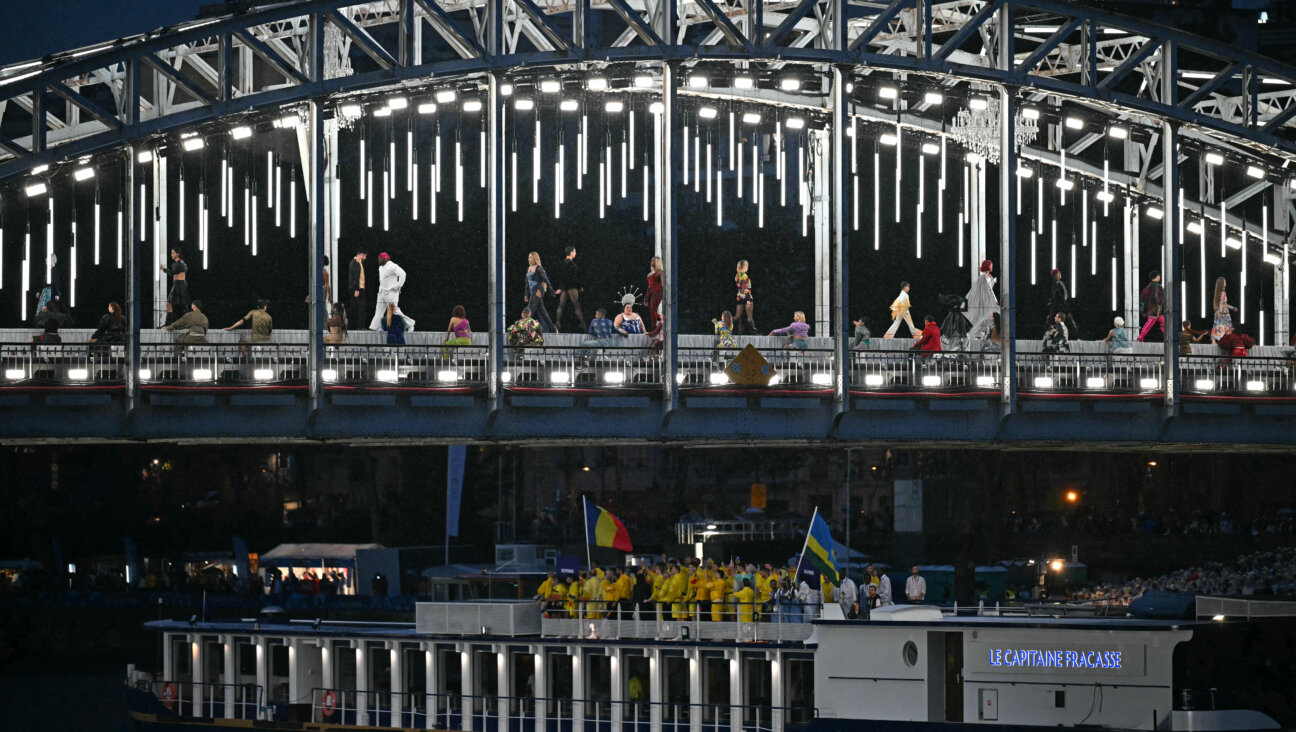Mormonism and Judaism are dominating television. Is that good for representation?
‘Under the Banner of Heaven,’ ‘Unorthodox’ and numerous other shows focused on minority religions have premiered recently. But their portrayals aren’t always flattering.
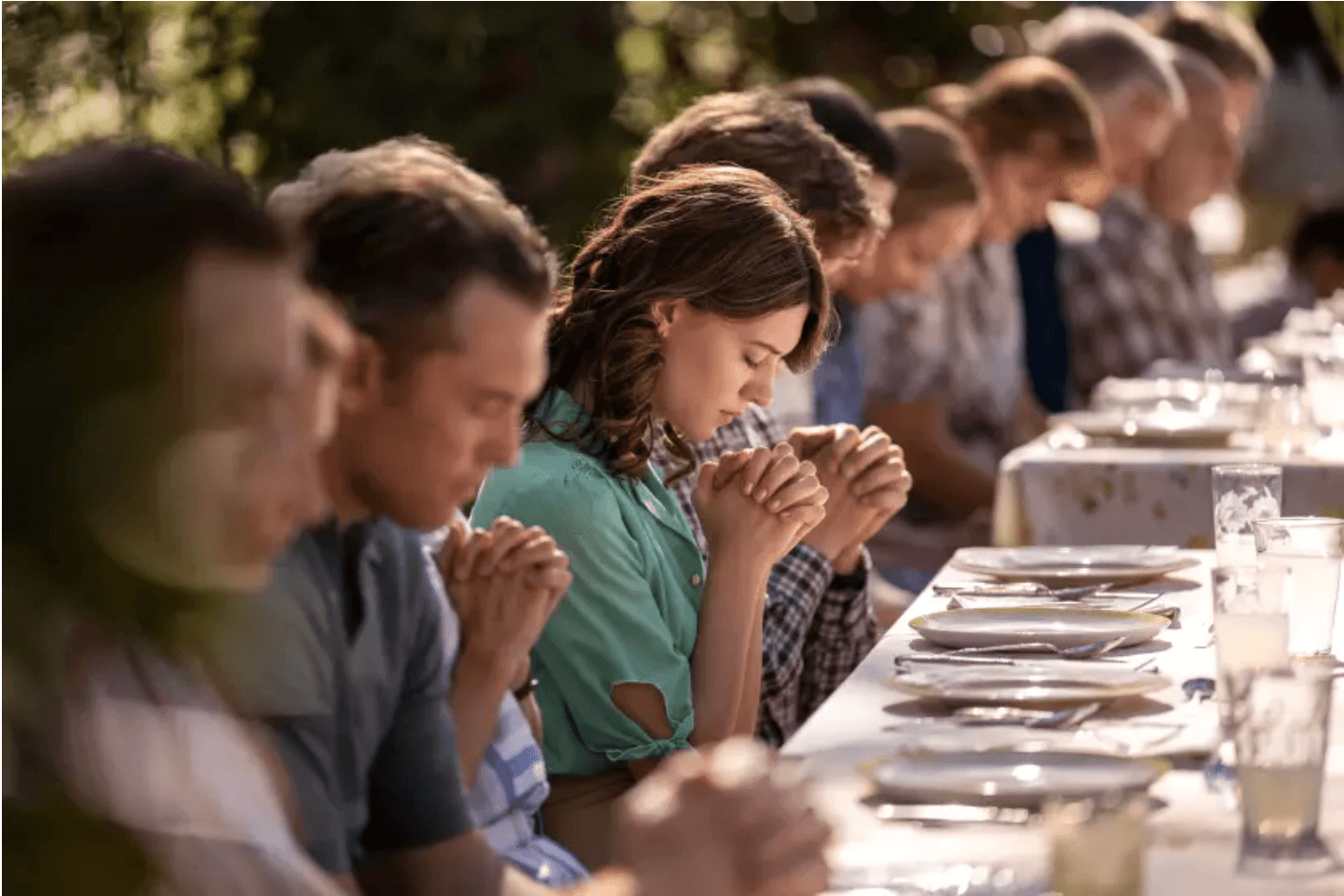
Praying before a meal in “Under the Banner of Heaven.” Photo by Michelle Faye/FX
Not long ago, religion, along with sex and politics, was considered a topic best avoided in polite company.
But when Netflix dropped “Unorthodox” in the spring of 2020, it was an immediate hit — and the beginning of a trend of shows about Haredi communities. It was followed by the third season of “Shtisel,” which resurrected the show after it had gone off the air years before. And then “My Unorthodox Life” dropped, following fashion designer Julia Haart’s journey leaving her Orthodox roots.
Now, it seems, it’s the Church of Jesus Christ of the Latter-Day Saints’ turn on the small screen.
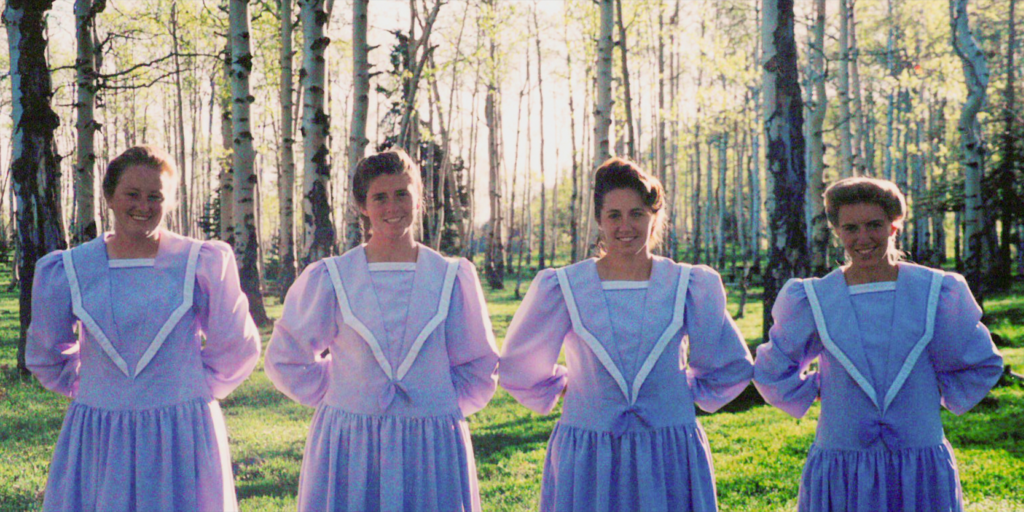
In late April, Hulu released “Under the Banner of Heaven,” a scripted true crime series following a pair of murders committed by Mormons. “Keep Sweet: Pray and Obey,” a Netflix docuseries about the Fundamentalist Latter-Day Saints (FLDS) sect held a spot in the streaming service’s top 10 for weeks. Now, “Mormon No More,” a documentary following ex-Mormons, has just dropped on Hulu.
These are all big shows with big budgets airing on major networks, not fringe films or indie shows. And they focus on big, well-known religions. “Unorthodox” and “Shtisel” may focus on Haredi communities, but for many Americans who have never met a Jew, they can easily represent the religion at large. “Under the Banner of Heaven” follows murders committed by extremist Mormons, but the show’s protagonists, who take up the majority of the screen time, are mainstream members of the faith.
Of course, people have always been curious about practices outside the norm, but before now, most of the fascination has centered on cults that are easy to criticize thanks to their relatively low membership and extremist beliefs — think “Wild, Wild Country,” about the Osho movement, and “The Vow,” looking at the NXIVM cult.
There’s something different about this more recent surge of religious content. Judaism is an old, well-known Western religion, and the LDS Church is huge, wealthy and powerful. Even if the particular sects depicted may feel foreign to viewers, the shows are still taking on a mainstream practice — and more of them are on the way.
Why now?
At a basic level, the increase in the number of shows that dig into religion may just reflect how streaming platforms have changed our media consumption.
“There’s been such an explosion of streaming services that there’s a need for content,” said Diane Winston, a professor of religion and media at the University of Southern California.
She hazarded a guess that platforms were reaching for more controversial content than before because they are scraping the barrel in search of fresh fodder for their audiences to keep them from defecting to another platform. But simultaneously, they don’t have to be quite as careful with what they show because streaming platforms allow viewers to choose what to see — there’s no pressure to appeal to whoever turns on the TV.
Streaming platforms’ algorithms also serve consumers what they want — and don’t show them anything they don’t — which can protect the platforms from the fallout and attacks that might have previously plagued a network taking on controversial topics such as religion.
“They’re going for niche audiences because you don’t need 40 million viewers to tune in,” said Winston. “A lot of these shows may fly under the radar for most people so they don’t bother criticizing them or getting angry or upset.”
Still, plenty of shows are making it mainstream, thanks to critical acclaim, meaning they’re able to transcend the algorithmic recommendations. “Unorthodox,” for example, swept through the awards circuit in 2020, and now “Under the Banner of Heaven” is beginning to accrue nominations.
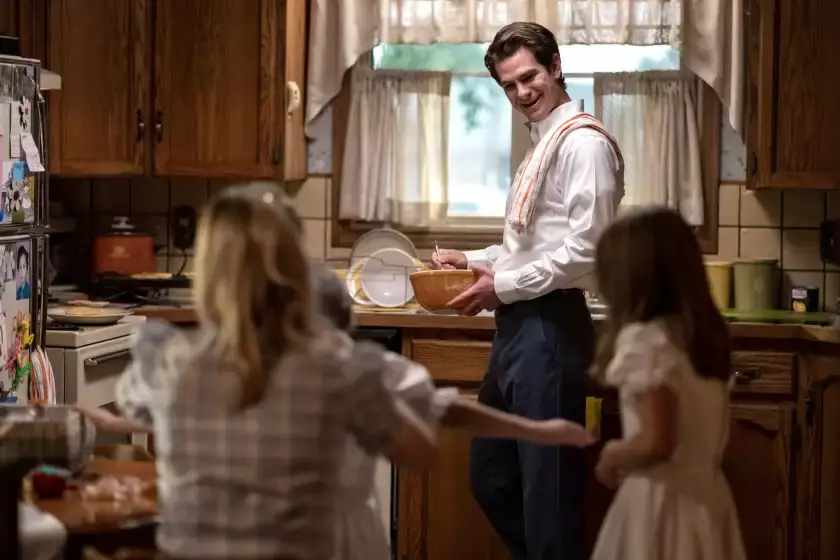
It’s clear that many viewers are encountering Jewish life and Mormon beliefs, seeing their dress and ritual practices for more or less the first time on these shows. On TikTok, the comment sections for Mormon and ex-Mormon influencers are full of questions and presumptions inspired by what users have seen on TV.
“Keep Sweet: Pray and Obey” has even minted new TikTok influencers thanks to the surge in curiosity about the teen girls who fled the fundamentalist sect depicted in the documentary. The now-secular girls make videos explaining how to do their hair in the teased sweeps and braids that mark the sect and talk about their education and families, with dozens of comments below each installment.
What happens when so many viewers are exposed to religions, cultures or stories they might not have otherwise encountered through a TV show?
Is there such a thing as too authentic?
While critics have responded positively to most of the new, religious content, viewers’ responses have been more mixed. Some Jews and Mormons have applauded the shows for giving an accurate window into their cultures, and representing groups outside the American mainstream.
The scripted shows — “Unorthodox,” “Shtisel” and “Under the Banner of Heaven” — spent exceptional amounts of time and research on accurately recreating the worlds they were portraying, reproducing shtreimels, the fur hats Haredi men wear on special occasions, and the holy garments worn only inside Mormon temples.
“There’s a lived-in attention to detail that rings true, down to the way certain characters speak,” wrote Nadine Smith, an ex-Mormon, of “Under the Banner of Heaven.”

Yet despite this eye toward authenticity, some members of the communities depicted have bristled at the portrayal of their lives and practices, accusing Netflix and Hulu of casting already-unfamiliar religions in a dark light to satisfy the American public’s morbid curiosity.
The pages of this very publication have been filled with complaints about the unrealistic or overly critical depictions of Orthodox communities seen in “Unorthodox” and “My Unorthodox Life.”
Similarly, numerous members of the LDS church have complained about how “Keep Sweet: Pray and Obey” and “Under the Banner of Heaven” skew their beliefs. In The Atlantic, McKay Coppins, a practicing Mormon and staff writer at the magazine, wrote that Hulu’s presentation of the religion operated to “serve a stereotype, to exoticize a people and flatten their faith tradition.” (He also argued that the show did not make a good faith effort toward authenticity. But given that the show even researched what Mormon undergarments looked like in the ’80s and had the actors wear them — even though they didn’t show — that particular criticism seems unfair.)
In fact, authenticity can contribute to the danger of these shows. “Is Netflix good for the Jews?” pondered critic Joseph Bernstein. It’s not that there have never been stereotyped portrayals of Jews before, he noted, but the campy schtick of yore didn’t purport to be authentic; the new shows do, even as they show only a narrow, highly critical slice of Jewish or Mormon life.
“The new shows capturing the public’s attention may feature accurate details and stories based in reality, but they only represent a sliver of Haredi life,” he wrote. “In turn, this sliver comes to represent the whole of Haredi Judaism in the algorithmically driven classificatory imagination.” For many viewers who don’t encounter Jews of any stripe in their regular life, that sliver likely represents not only the whole of Haredi Judaism, but the whole of all Judaism.
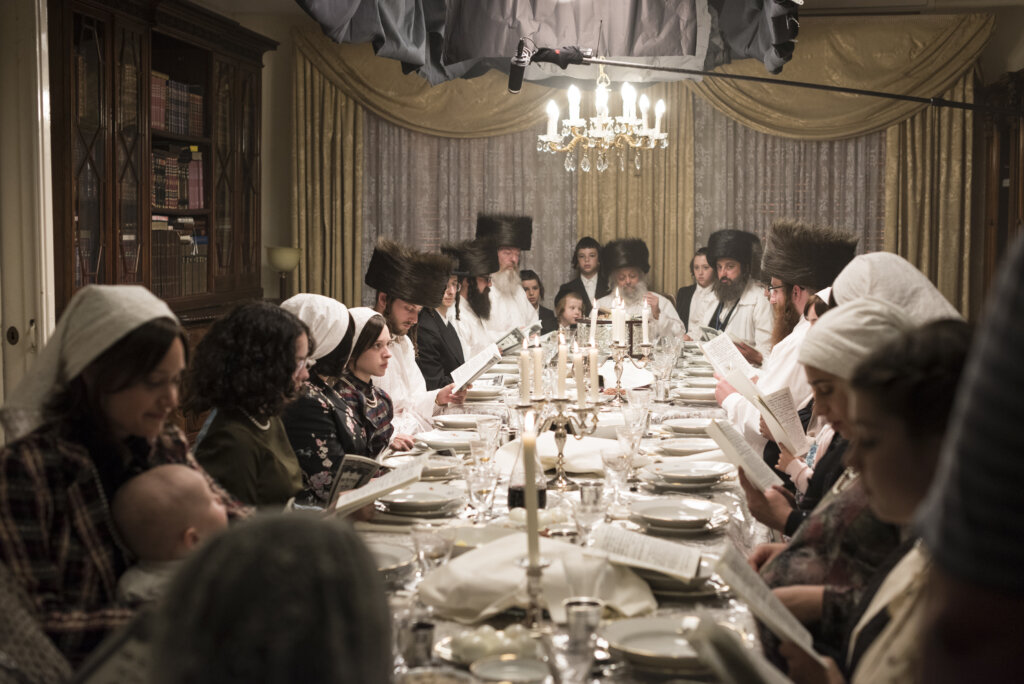
The same can, of course, be said of the fundamentalist Mormons that feature in most of the shows and documentaries about the LDS church. And even the portrayals of mainstream Mormons in “Under the Banner of Heaven” and “Mormon No More” highlight the strangest or most difficult parts of their faith, such as the temple garments, gendered roles and homophobia. It’s easy to walk away from the shows wondering why anyone would believe in or follow such outlandish practices.
“Unorthodox” and “Under the Banner of Heaven” are both based on true stories, meaning they feel like rigorous and credible representations of real life inside a cloistered community. “My Unorthodox Life,” “Mormon No More” and “Keep Sweet” are all documentaries. Yet even taken together, they give only limited — and enticingly scandalous — insight into these communities.
What’s missing?
Connor Martini, a doctoral candidate studying religion and media at Columbia University, doesn’t want us to focus on what the shows present — he wants us to look at what’s left unsaid.
“What is not being portrayed,” he asked when we spoke over Zoom. “What is the implicit understanding of religion that they’re working with?”
Martini and Winston, the USC professor, both pointed out that good old American Protestantism is never the focus of shows. Sometimes a sex scandal or embezzling church leader will merit attention, and characters in many shows attend church, but Protestantism itself is rarely the subject of curiosity — it’s too normal and boring. But in a way, that boring nature is its draw; boring is safe and unassailable.
Each unfamiliar religion in these shows is portrayed as, at best, unfamiliar and uncomfortable, such as in “Shtisel,” where Akiva’s artistry is discouraged and he grates against the community he loves, or in “Mormon No More,” which follows two formerly devout women who liked their faith but left Mormonism because their queerness was not accepted. At worst, most of these shows paint both Judaism and Mormonism as full of harmful and dangerous beliefs.
And if these religions are aberrant, what’s left?
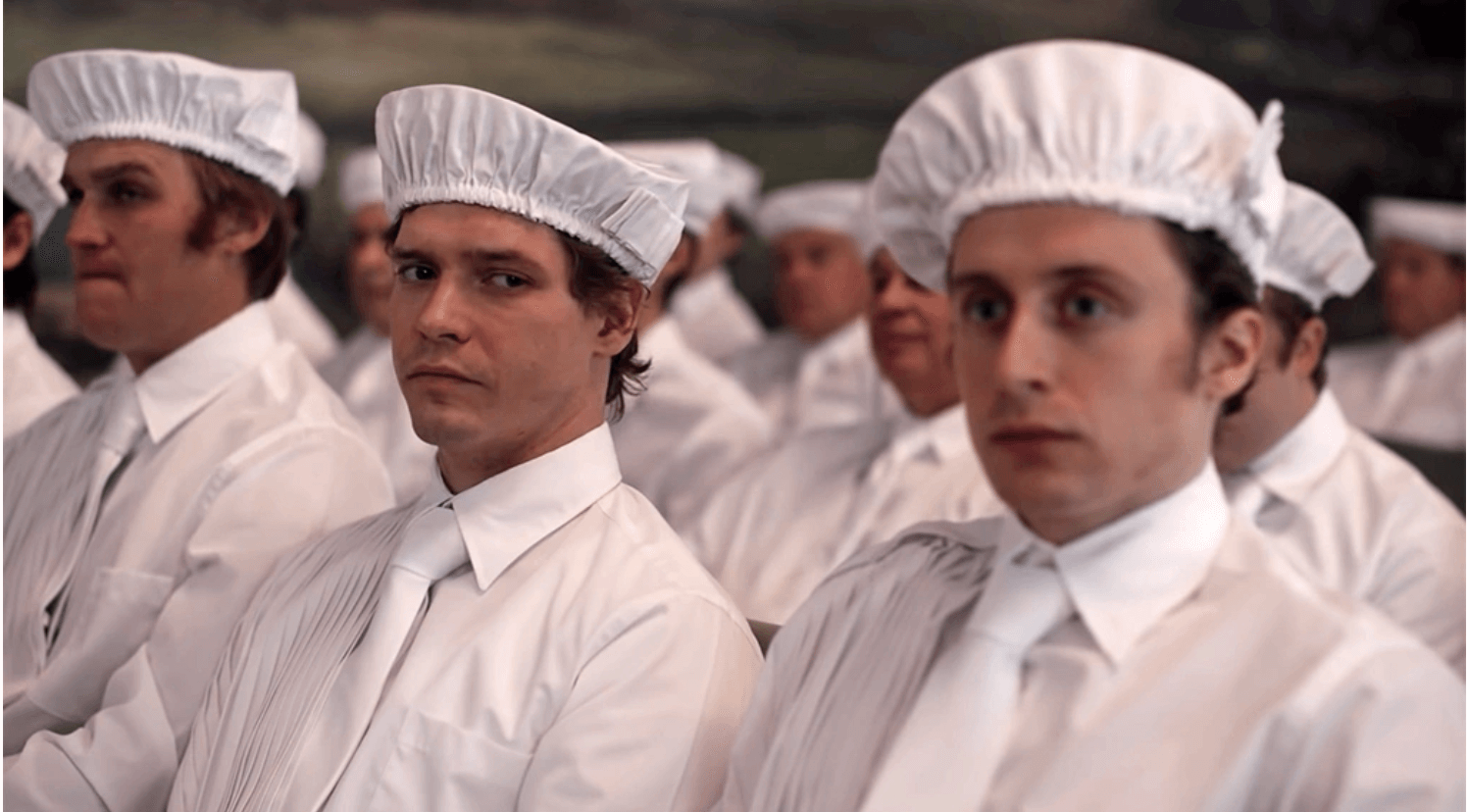
“The unspoken part is what the show thinks is good religion,” said Martini. “That good religion always looks like individualized, liberal Protestantism. It looks like going to church on Sunday and that’s it. It continues a really really long history, particularly in the United States, of always always always defining religion based off of the archetype of Protestantism.”
It’s unlikely that the creators of these shows set out to reinforce the norm of Protestantism in American culture. Interviews with the showrunner of “Unorthodox,” for example, make it clear that she found the story compelling and worked hard to represent the Satmar community sensitively and accurately, including hiring sensitivity readers and consultants to work on the cast’s Yiddish.
Yet when each new show about religion concentrates on a tradition’s strangeness and dangers, or the repression and violence inside it — and especially when they each highlight people fleeing their tradition to join mainstream American society — it’s hard not to draw the conclusion that whatever the default mainstream life is must be better, more reasonable and safer than these unfamiliar traditions. Even “Shtisel,” which is widely recognized for its nuanced portrayal of Haredi life, also highlights the difficulties of that world.
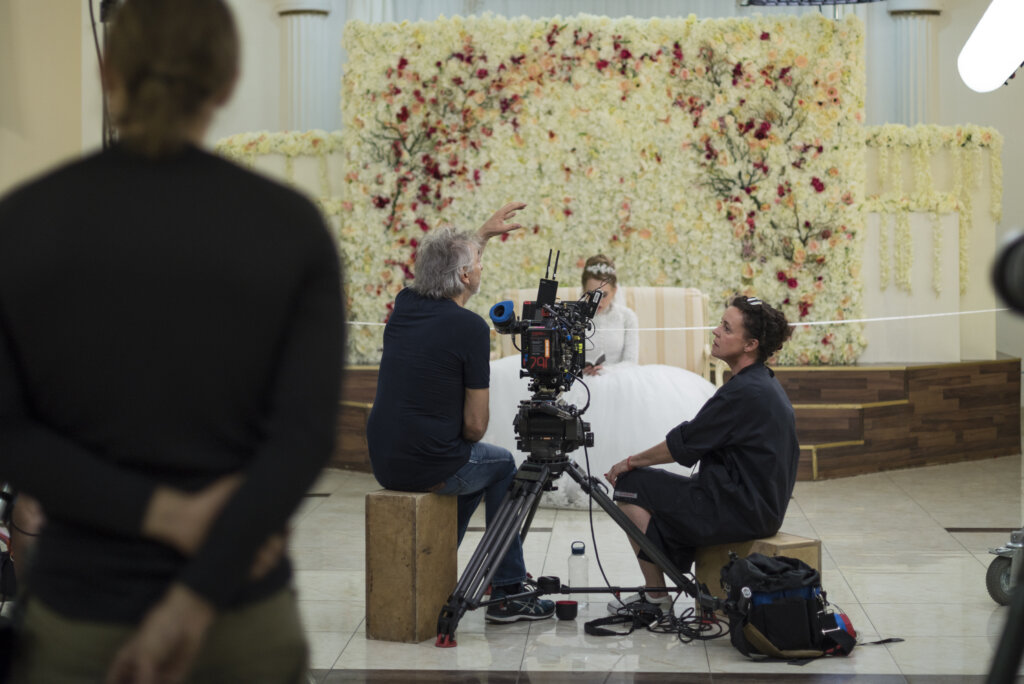
Paying attention to other, unfamiliar religions also allows viewers to avoid turning a critical eye toward the discomforts or repressive practices in their own, more mainstream religions, whether that be Protestantism or more assimilated, less-observant forms of American Judaism. The more distant the other religion feels, the more justified their own practice appears.
Martini explained that watching shows that portray other religions as frightening or dangerous can feel good in part because it allows the viewer to feel comfortable and righteous in their own practices: “We as an audience can watch this presentation and say, ‘Oh well I’m not like that; I’m not religious like that.’”
Viewers feel free to analyze and criticize unfamiliar traditions, and can opine on their flaws and oddities thanks to the TV shows that have exposed them to the most exotic, noteworthy practices. And with their focus elsewhere, they can avoid turning their attention inward, avoiding harm or limits ingrained in their own, more mainstream practices.
“That lets religion off the hook a little,” Martini said.
It’s fundamentally difficult to turn the lens on mainstream practices — any bad actor is viewed as an anomaly, a deviation from the default that doesn’t represent the whole. Shows about Christianity have often focused on an individual corrupt leader or church, emphasizing how they break with tradition. But with minority groups, even the most unique story is generalized. Representation, it turns out, is not so simple.
Still, personally, I’d love to watch a show on the theological tensions inside a nice, normal American church. After all, I’ve never been, so, it seems pretty exotic to me.










